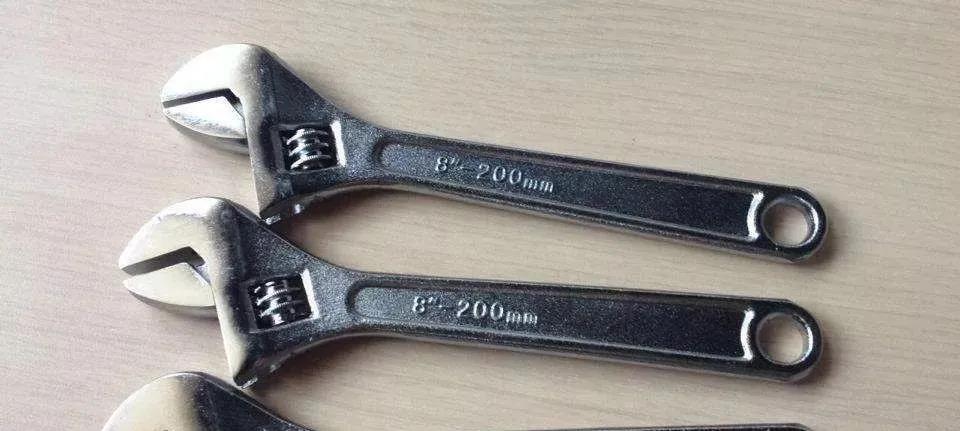Keyword: CNC machining parts Auto Spare Parts Milling machining Turning parts Grinding machining
Contact person: Nick Lee
Phone: (86) 15362887736
E-mail: sales03@dgmtwj.cn
Tel: (86) 769-88388276
Factory: No.2, Baidai Industrial Park, Daojiao Town, Dongguan, China ,
Electroplating is the process of plating a thin layer of other metals or alloys on the surface of some metals by electrolysis. It is a process of attaching a layer of metal film to the surface of metal or other material products by electrolysis, so as to prevent metal oxidation (such as corrosion), improve the wear resistance, conductivity, reflectance, corrosion resistance (copper sulfate, etc.) and enhance the beauty. Electroplating is divided into copper plating, gold plating, silver plating, chromium plating, nickel plating and zinc plating and other specific processes, especially for zinc plating, nickel plating and chromium plating. And there must be some difference between the three?
01 zinc plating
Definition: galvanizing refers to the surface treatment technology of plating a layer of zinc on the surface of metal, alloy or other materials to play the role of beauty and rust prevention.
Features: low cost, general anti-corrosion, silver white color.
Application: screw, circuit breaker, industrial supplies, etc.

↑↑White Zinc↑↑

↑↑Color Zinc↑↑
02 nickel plating
Electroless plating of nickel on a non-metallic layer is defined as electroless plating.
Features: beautiful, can do decoration, high price, slightly complex process, the color is silver white and yellow.
Application: energy saving lamp cap, coin, hardware, etc.


03 chrome plating
Definition: chromium is a kind of bright white metal with micro blue color. The method of plating a layer of chromium on metal or some nonmetal by electrolysis or chemical method is called chromium plating.
Features: there are two kinds of chromium plating, the first is to play a decorative role, the appearance is bright, wear resistance is better, antirust ability is not as good as zinc plating, better than oxidation; the second is to increase the hardness and wear resistance of metal parts, which is the function of parts.
Application: household appliances, electronics and other products on the bright decorative parts, tools, faucets, etc.


The basic difference of three kinds of electroplating
Chromium plating is mainly to improve the surface hardness, beauty, rust. Chromium coating has good chemical stability and does not react in alkali, sulfide, nitric acid and most organic acids, but can be dissolved in hydrohalic acid (such as hydrochloric acid) and hot sulfuric acid. Because chromium does not change color, it can maintain its reflection ability for a long time, which is better than silver and nickel. The process is generally electroplating.
Nickel plating is mainly wear-resistant, anti-corrosion, rust, general thickness is relatively thin, the process is divided into electroplating and chemical two categories.
Zinc plating is mainly beautiful and rustproof. Zinc is an active metal that reacts with acids, so it has poor corrosion resistance and is the cheapest of the three.
In terms of cost, chromium plating is the most expensive, nickel is the second, zinc is the cheapest, and hanging plating, barrel plating, etc. Hanging plating is expensive, barrel plating is cheap.

Someone may still confused, "no, it's still the same silly, not clear.". So We can only tell you that I will be confused if I nag for a while. Let's distinguish it by color.
Chrome bright white, nickel plating a little yellow, galvanized silver white (in fact, there are color zinc, gray zinc, matte chromium, bright chrome, white nickel, black nickel, etc., the more you say, it is stupid to distinguish clearly).
Expanding knowledge
1. Electroplating production is mainly polluted by sewage and heavy metals in sewage. The expansion of electroplating industry has been strictly controlled by the state, and has been reduced year by year.
2. Electroplating processing in China is mainly zinc plating, copper plating, nickel plating and chromium plating, of which zinc plating accounts for 50%, copper, chromium and nickel plating accounts for 30%.
3. If the purpose is to prevent rust, zinc or cadmium plating can be used; if the emphasis is to prevent wear, nickel or chromium plating is the best choice.